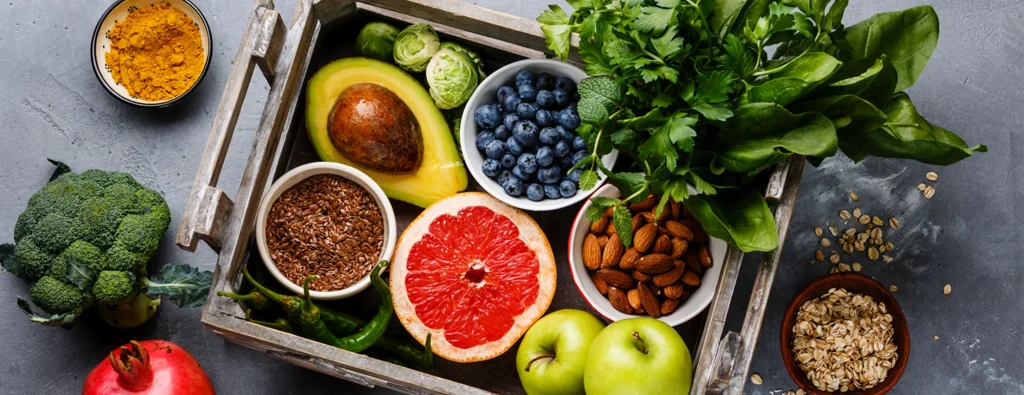
Eating a balanced diet is crucial for supporting your health and enhancing your wellness. It’s about selecting a variety of foods that provide all the necessary nutrients to maintain your body and mind. By understanding food groups, portion sizes, and planning meals ahead, you can enjoy sustainable, healthy eating habits that work for your lifestyle.
Understanding the Basics of a Balanced Diet
What is a Balanced Diet?
A balanced diet involves eating a variety of foods in the right proportions. It includes macronutrients like carbohydrates, proteins, and fats, along with essential micronutrients. Each meal should provide energy, support bodily functions, and help maintain a healthy weight. Balanced diets aren’t about strict restrictions—they’re about creating harmony in your diet so that all food groups are represented.
Key Food Groups to Include
The main food groups to incorporate are fruits, vegetables, proteins, grains, and dairy (or dairy alternatives). Each group provides distinct benefits: fruits and vegetables supply vitamins and fiber, proteins support muscle health, grains offer carbohydrates for energy, and dairy contributes calcium. Eating a variety of these foods helps ensure you get a full spectrum of nutrients.
Macronutrients and Micronutrients Explained
Importance of Macronutrients
Macronutrients—carbohydrates, proteins, and fats—are the building blocks of energy. Carbohydrates fuel your daily activities and brain function, while proteins repair tissues and support immune health. Fats are also crucial; they help with cell function and absorb certain vitamins. Balance each macronutrient to create meals that sustain you without excess.
Role of Micronutrients in Health
Micronutrients include vitamins and minerals, essential for a range of bodily functions. They play roles in everything from energy metabolism to immune support. For example, calcium supports bone health, while vitamin C boosts immunity. Consuming colorful fruits and vegetables can ensure a wide range of micronutrients, benefiting both physical and mental health.
Tips for Healthy Eating Habits and Portion Control
Building Healthy Eating Habits
Healthy eating habits can be simple and sustainable. Try to eat mindfully, focusing on whole foods rather than processed options. Establish regular meal times to avoid overeating, and aim to enjoy a variety of foods. Including more plant-based foods, such as leafy greens, nuts, and legumes, can also add valuable nutrients.
Effective Portion Control Techniques
Portion control is key to avoiding overeating while still enjoying your food. Use smaller plates to help manage portion sizes, and try filling half your plate with vegetables. When dining out, consider splitting meals or packing leftovers. These techniques make it easier to maintain balance without feeling deprived.
Meal Planning for Optimal Health
Creating a Balanced Weekly Meal Plan
Meal planning makes it easier to eat balanced meals consistently. Start by mapping out meals with a variety of proteins, grains, and vegetables. Choose recipes that include all major food groups and prep ingredients in advance. This saves time and ensures that balanced options are readily available, helping you stay on track.
Preparing Balanced Meals with Ease

Preparing balanced meals can be quick and satisfying. Aim for combinations like grilled chicken with roasted vegetables and quinoa, or a hearty salad with mixed greens, beans, and a sprinkling of seeds. Easy swaps, like using brown rice instead of white or choosing whole-wheat bread, add nutrients without extra work.
The Benefits of Maintaining a Balanced Diet
Physical Health Benefits
A balanced diet provides numerous physical health benefits. It can support heart health, reduce the risk of chronic diseases, and aid in weight management. When combined with an active lifestyle, a balanced diet strengthens immunity, supports muscle health, and helps with healthy aging. It’s a powerful way to promote overall physical wellness.
Mental and Emotional Wellness
Good nutrition impacts not only physical health but also mental well-being. Nutrient-rich foods have been linked to improved mood, reduced anxiety, and better focus. Maintaining stable blood sugar through balanced meals helps keep energy steady, promoting better sleep and mental clarity.
Practical Strategies for Maintaining a Balanced Diet
Incorporate small, consistent changes for lasting success. Stock your kitchen with healthy options, experiment with new recipes, and create a grocery list to stick to your goals. Stay hydrated, avoid skipping meals, and enjoy variety to prevent food fatigue. By making your diet enjoyable and achievable, maintaining balance becomes second nature.
Practical Strategies for Maintaining a Balanced Diet
Maintaining a balanced diet doesn’t require drastic changes—it’s about creating habits that last. Start by stocking your kitchen with a mix of whole grains, lean proteins, fruits, vegetables, and healthy fats. When grocery shopping, stick to a list based on balanced meals planned for the week to avoid impulse buys.
Staying hydrated is also essential to help regulate appetite and support digestion. Aim to drink water throughout the day and limit sugary drinks. Avoid skipping meals, as this can lead to overeating later on and disrupt blood sugar levels. Instead, try eating at regular intervals to keep energy steady.
Variety is also key to keeping your diet interesting and nutritious. Rotate recipes, try new fruits and vegetables, and explore different cooking methods. Making your diet enjoyable and flexible will help you stay committed to a balanced lifestyle in the long term.
- Set Realistic Goals: Start small by introducing one or two healthy changes at a time, such as incorporating more fruits and vegetables into your meals or choosing whole grains over refined options.
- Stay Informed: Educate yourself about nutrition and the benefits of different food groups. Understanding how various nutrients impact your body can motivate you to make better choices.
- Listen to Your Body: Pay attention to hunger cues and eat when you’re hungry. Similarly, learn to recognize when you’re full, and don’t feel pressured to finish everything on your plate.
- Involve Family and Friends: Encourage your loved ones to join you in adopting healthier eating habits. Cooking together or sharing meals can make the process more enjoyable and supportive.
- Celebrate Progress: Acknowledge your achievements, no matter how small. Whether you successfully meal-prepped for the week or tried a new vegetable, celebrating these victories will motivate you to keep going.
Final Thoughts
Ultimately, a balanced diet is about nourishing your body and enhancing your overall quality of life. The benefits extend beyond physical health; a well-rounded diet can boost your mood, improve mental clarity, and promote a sense of well-being.
By prioritizing nutritious foods, practicing portion control, and planning your meals, you pave the way for lasting health. Remember, it’s not about strict rules or deprivation; it’s about creating a sustainable approach that fits your lifestyle.
Start today, and you’ll find that making informed food choices can be both rewarding and enjoyable. Here’s to a healthier, happier you!
Conclusion
Maintaining a balanced diet is one of the most effective ways to support optimal health and wellness. With a focus on nutrient-dense foods, portion control, and consistent meal planning, you can create a lifestyle that keeps your body and mind healthy. Embrace healthy eating habits, enjoy variety, and remember that balance is the goal, not perfection. Small, sustainable steps can make a big difference in your overall well-being, helping you feel your best every day.
Written By – Seema Kanojiya
